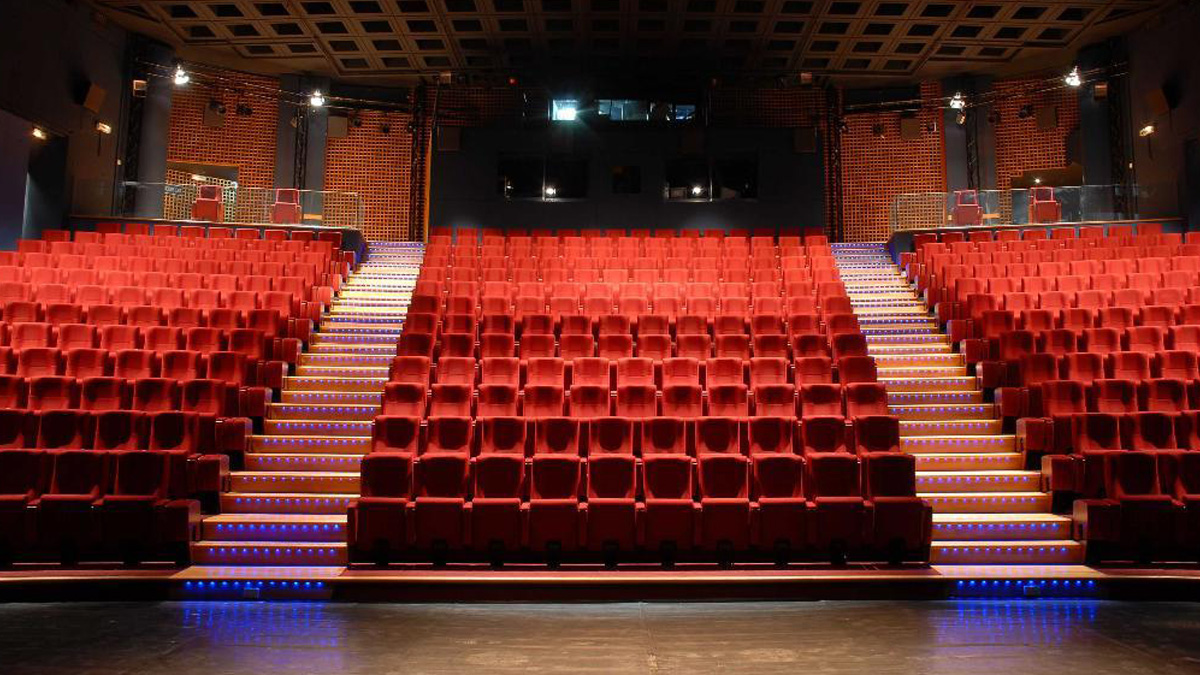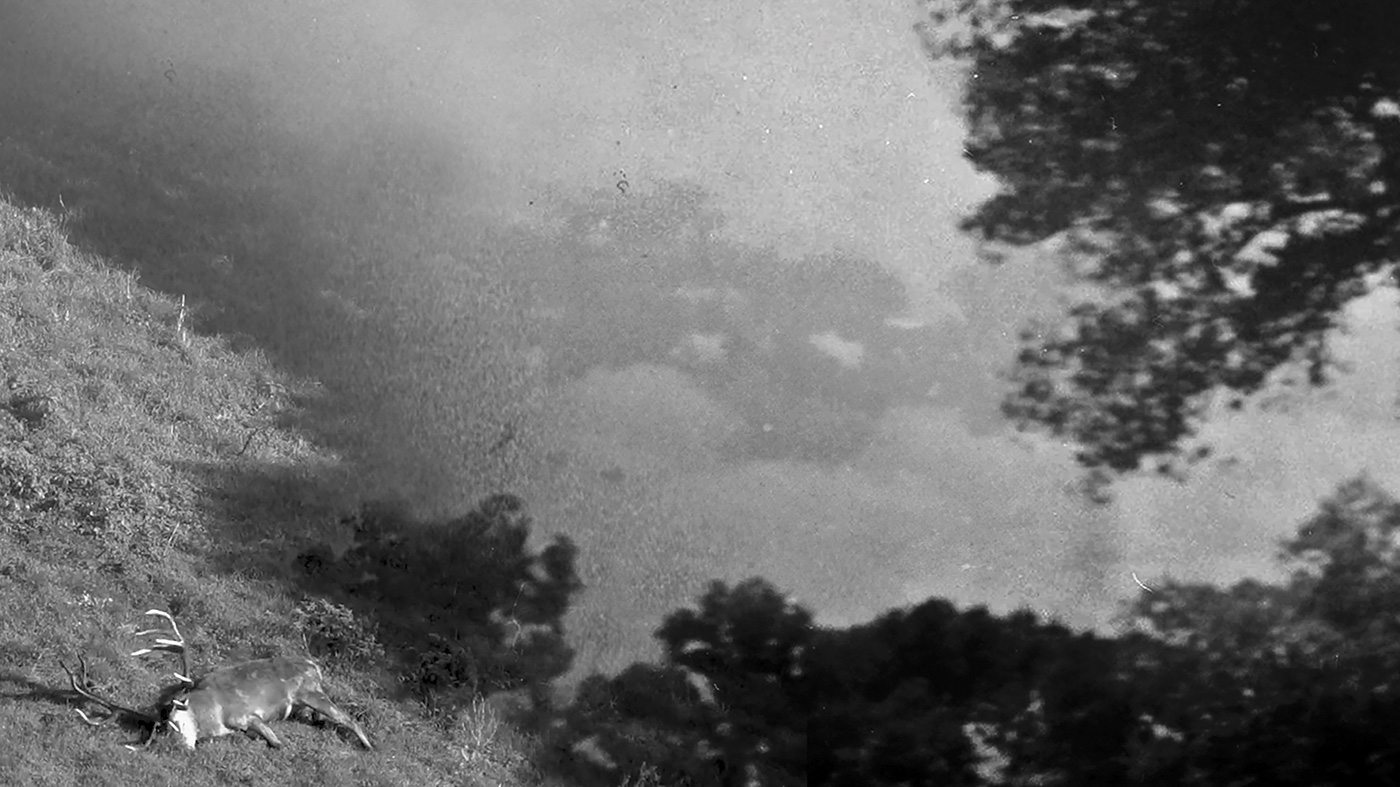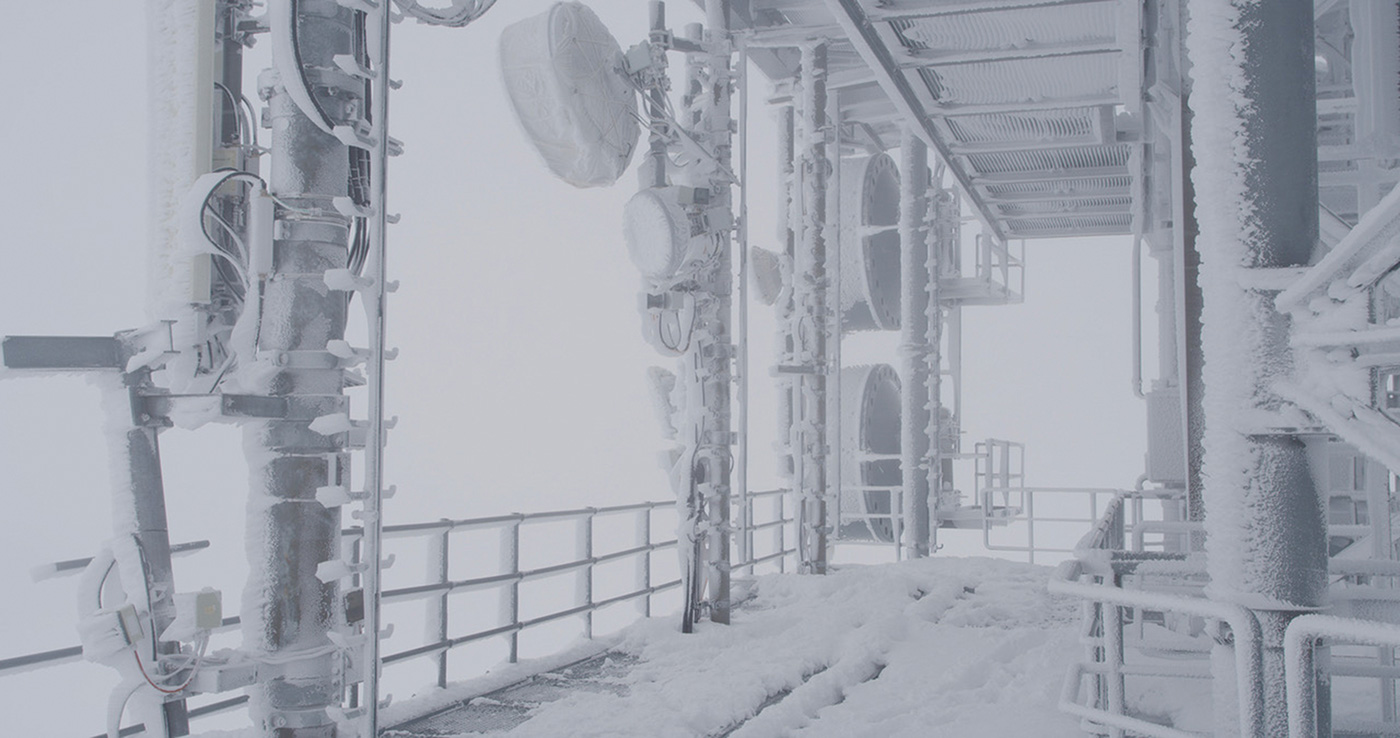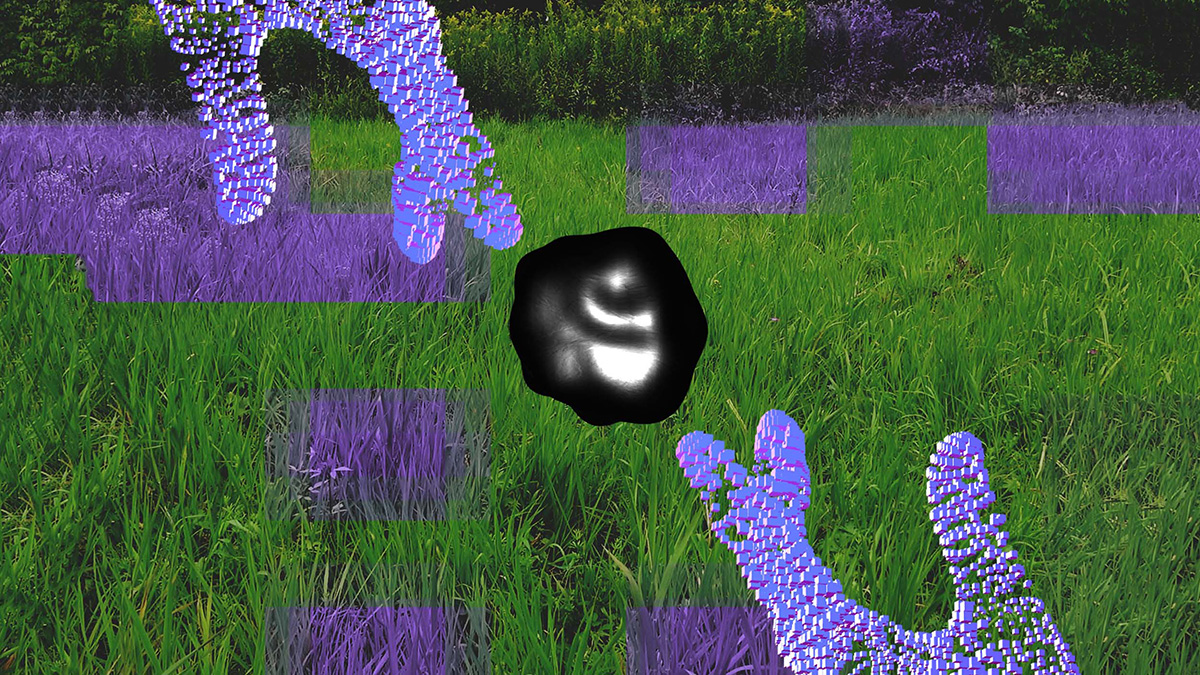Paris Programme
Monday, 24 November 2025
The Rencontres Internationales Paris/Berlin will take place from 24 to 30 November in Paris. We look forward to seeing you there! Join us at the Forum des images on Monday 24 November for the opening of this exceptional edition. Admission is free!
Opening
Forum des images
Forum des Halles (niveau -3), 2 rue du cinéma - 75001 Paris / Metro: Les Halles, line 4 (Saint-Eustache exit, Place Carrée) and Châtelet, lines 1, 7 and 14 (Place Carrée exit)
Free admission for all, subject to availability
| free reservation 7.30 pm | free reservation 9.30 pm |
Reservations are not compulsory. You can attend a session without a reservation, subject to availability.
Welcome to the 2025 edition!
We look forward to seeing you at the opening night on Monday, 24 November 2025, with a magnificent inaugural screening, a live mix, a multimedia performance, a themed screening, rare films making their international premiere, and much more.

Opening
Forum des images
Forum des Halles (niveau -3), 2 rue du cinéma - 75001 Paris / Metro: Les Halles, line 4 (Saint-Eustache exit, Place Carrée) and Châtelet, lines 1, 7 and 14 (Place Carrée exit)
Free admission for all, subject to availability
Reservations are not compulsory. You can attend a session without a reservation, subject to availability.
Inaugural session
A magnificent surprise screening session, with five rare films shown in international premiere.
Opening
Forum des images
Forum des Halles (niveau -3), 2 rue du cinéma - 75001 Paris / Metro: Les Halles, line 4 (Saint-Eustache exit, Place Carrée) and Châtelet, lines 1, 7 and 14 (Place Carrée exit)
Free admission for all, subject to availability
Mix live / dj set
After the opening session, a lively drinks reception, a hybrid DJ set, multifaceted sounds, a stream of sound flowing through the Forum des images.

Opening
Forum des images
Forum des Halles (niveau -3), 2 rue du cinéma - 75001 Paris / Metro: Les Halles, line 4 (Saint-Eustache exit, Place Carrée) and Châtelet, lines 1, 7 and 14 (Place Carrée exit)
Free admission for all, subject to availability
Reservations are not compulsory. You can attend a session without a reservation, subject to availability.
Performance + Screening
"Landscape geometries"
An exceptional AV performance followed by a themed screening – experimental videos, hybrid and multimedia forms.
With reference to Donna Haraway, who in "Staying with the Trouble" reflects on how ideas, beings and worlds are interconnected, the duo TraumaZone explores the possibilities of coexistence between humans and non-humans. The performance "Strings" consists of live and pre-recorded images and sounds, notably produced from the electromagnetic radiation of solar panels and radio waves.
Traumazone : Strings - Multimedia concert | mov | color | 19:35 | Germany | 2025
Traumazone
Strings
Multimedia concert | mov | color | 19:35 | Germany | 2025
Project Strings is an audio-visual live performance and a video essay by TraumaZone art duo. The project is based on the book Staying with the Trouble by Donna Haraway, where the author reflects on how ideas, beings, and worlds are connected together like strings in the game of Cat’s cradle. Taking the string games as the main idea, the Strings talk about the concepts of human and non-human co-existing together in a social system. As the narrative moves forward, the audience sees the solid grid of connections gradually dissolving, and fluidity emerging as the core cooperation principle. The performance consists of reactive live and prerecorded visuals, and the live sound set, that includes a 20-second loop of electromagnetic radiation emitted by a solar panel, combined with fragments of AM broadcasts recorded during an art residency in rural Bavaria. The video essay also includes the shortened version of the material with more energetic pace of narration. Project Strings invites the audience into a meditative landscape where sound and visuals work together, destroying rigid structures and embracing a more fluid, interconnected modes of existence.
TraumaZone is a live-coding duo based in Berlin, consisting of Ksenia Sova, a video artist and Fyodor Stepanov, a sound designer. Their main focus is to politicize the art community by bringing to the spotlight important questions and creating a safe space for discussion. Ksenia Sova (they/them) is a media artist based in Germany. They studied media art at the Academy of Fine Arts Leipzig, Germany. They work are especially interested in exploring topics connected with alienation, isolation and anxiety of a queer body in digital environments. They use an expanded cinema approach to create time-based art-pieces for personal and group exhibitions. Fyodor Stepanov (he/they) is a sound artist and composer based in Berlin, Germany. He specialises on electro-acoustic works for interactive installations, audio-visual performances and video art. His creative output is driven by notions of transience, non-linearity, and ambiguity intrinsic to sound. The approach he has developed over the past decade combines generative algorithms with bits of radio broadcasts, field recordings, and electromagnetic listening to produce eerie acousmatic soundscapes that slowly develop over long periods of time.
The performance is followed by a short screening session, featuring the following works:
Driessens & Verstappen : E-volved Formulae - 0 | 0 | black and white | 10:1 | Netherlands | 2024
Driessens & Verstappen
E-volved Formulae
0 | 0 | black and white | 10:1 | Netherlands | 2024
The image generating Formulae E-volver software is developed by the artists. The building blocks of the software are all kinds of basic mathematical operators. The computer can compose an infinite amount of valid formulas out of these elements. Each time, a small set of formulas is composed and visualised on the screen. The viewer compares these animated images with each other and reviews them. In turn, the software responds on those reviews when it composes new formulas. Formulas that were displayed on the screen for a long time have more chance to crossbreed, whereby visual properties are mixed and passed on to future generations. The process begins with a "primordial soup" which yields relatively simple images. On the basis of personal preferences of the user, this gradually evolves into complex intriguing animations. The final results, the E-volved Formulae, are stored and are displayed on a large screen or projected. They show a wide variety of outcomes of the successive evolutionary processes.
The Amsterdam based artist couple Erwin Driessens (1963 Wessem) and Maria Verstappen (1964 Someren) have worked together since 1990. After their study at the Maastricht Academy of Fine Arts and the Rijksakademie Amsterdam, they jointly developed a multifaceted oeuvre of software, machines and objects. Their research focuses on the possibilities that physical, biological and computer algorithms can offer for image generating processes. An important source of inspiration are the self-organizing processes in nature. In the Morphoteques series (form collections), they show the form variations, which can be expressed within a specific generative process. In other works, the shape transformations are evoked in real time by means of a machine. In their software and AI projects, they develop an artificial nature, which is expressed in all kinds of variations. Driessens & Verstappen participated in numerous exhibitions in the Netherlands and abroad, a.o. Stedelijk Museum Amsterdam, Museum Boijmans van Beuningen Rotterdam, Centre Pompidou Paris, IVAM Institute Valencia, Museum Kröller-Müller Arnhem, Garage Museum Moscow, CaixaForum Barcelona, Eyebeam New York. The couple gives lectures and presentations at universities, art academies, festivals and conferences, a.o. Siggraph Los Angeles, Sonic Acts Amsterdam, Second Iteration Melbourne. In 1999 and 2001 their Tickle robot projects have been awarded first prize at VIDA Telefónica Madrid. In 2013 the couple received the Witteveen+Bos Art+technology Award for their entire oeuvre. The artists are represented by gallery DAM in Berlin.
Andro Eradze : Flowering And Fading - Experimental film | 0 | color | 16:22 | Georgia | 2024
Andro Eradze
Flowering And Fading
Experimental film | 0 | color | 16:22 | Georgia | 2024
A dog and a human share sleep in the twilight of a calm house. Suddenly, the shapes of reality start to blur, and slowly, dream and fantasy take over. In his latest work, Andro Eradze shapes a new vision of surrealism, where impeccable image composition and a stunning sound work strike directly at the subconscious, submerging the senses in an ocean of absolute beauty.
Andro Eradze (b. 1993, Tbilisi, Georgia) is an artist and filmmaker whose multidisciplinary practice investigates the intersection of presence, memory, and spectrality. Through photography, installation, video, and experimental cinema, Eradze explores the agency of non-human entities within landscapes that blur the boundaries between human and non-human experiences. His projects often evoke liminal spaces, exploring the unexpected actions and relations among objects, plants, and animals. He took part in several solo and group exhibitions and screenings in international institutions including MoMA PS1, New York; The 59th Venice Biennale, Venice; The New Museum, New York; WIELS Contemporary Art Center, Brussels; GAMeC, Bergamo; 22nd Biennial Sesc_Videobrasil, Sao Paulo; 14th Kaunas Biennial, Lithuania; Fondation Vincent van Gogh Arles.
Sebastián DÍaz Morales : One Glass Eye Melting - Experimental video | mov | color | 13:0 | Argentina, Netherlands | 0
Sebastián DÍaz Morales
One Glass Eye Melting
Experimental video | mov | color | 13:0 | Argentina, Netherlands | 0
One Glass Eye Melting conjures the common imaginary of dystopia to rearticulate it in search of new possibilities. A close-up of a rotating eye gazes back at the viewer, its pupil reflecting a montage of disasters—war, natural catastrophe, and mundane accidents—juxtaposed with scenes of regeneration: microbial life, cosmic expansion, and technological evolution. Filmed in a raw, single-shot sequence with minimal post-production, the eye becomes both a mirror and a fractured “memory container,” destabilised by glitches, scratches, and analogue/digital noise. The work interrogates the act of looking itself, transforming reality into something surreal yet unnervingly familiar. As the eye spins 360 degrees, the pupi’s reflection remains fixed, anchoring chaos and renewal as cyclical, interdependent forces. One Glass Eye Melting reframes disaster as inseparable from rebirth, arguing that collapse harbours the potential to reimagine—and rebuild—our narratives. Rather than revisiting catastrophe, the work asks: What do we do with these images of disaster? The work summons the collective imagination of dystopia, rearticulating its imagery in pursuit of uncharted possibilities. Part of the series Bajo el cielo cayendo (Under the Falling Sky), which explores the tension between systemic disaster and fragile hope.
Sebastián Díaz Morales was born in Comodoro Rivadavia, Argentina, in 1975 and lives and works in Amsterdam. He attended the Universidad del Cine de Antín in Argentina from 1993-1999, the Rijksakademie van Beeldende Kunsten in Amsterdam from 2000-2001, and Le Fresnoy Studio des Arts Contemporains in Roubaix, France from 2003-2004. Díaz Morales’s examination of perception and reality is based on the assumption that reality itself is by nature highly fictional. Thus, his films do not simply transport the viewer into another, surreal, or phantasmal realm, but they strip reality of its familiarity and distort it, making it seem like something else. With Diaz Morales, the viewer’s imagination does not function as a basic counterpart to the real. Rather, it operates as a force capable of evoking space and producing it diegetically, one that, beyond generating a direct visual impression, fills in the gaps in seeing and, as the film unfolds, gradually reveals to the viewer the constructedness of what we call reality. Reality is presented here as a phantasm, as something that always eludes its defining in images. It is therefore always “a little bit ahead” of the image and the viewer’s gaze. His work has been exhibited widely at venues—such as the Tate Modern, London; Centre Pompidou; Stedelijk Museum and De Appel, Amsterdam; Le Fresnoy, Roubaix; CAC, Vilnius; Art in General, New York City; Ludwig Museum, Budapest; Biennale Sao Pablo; Biennale of Sydney; Miro Foundation, Barcelona; MUDAM, Luxemburg; Calouste Gulbenkian Foundation, Lisbon; the Biennale di Venezia and Documenta Fifteen.
Jan Locus : Intruders - Experimental film | 0 | black and white | 6:5 | Belgium | 2025

Jan Locus
Intruders
Experimental film | 0 | black and white | 6:5 | Belgium | 2025
Intruders explores the boundary between science fiction and reality, investigating themes of reverse colonization, ecology and human environmental impact. The film offers an introspective reflection on the Western fascination and fear of extraterrestrial entities. In an elongated pan, mountain landscapes and misty images of animals are presented in an ethereal, ghostly way. Locus does not use conventional film footage, but found footage online hunting videos and black and white photographs of UFO observations from the 1950s and 60s. Although these images reveal their origins through their grainy texture, Locus removed the UFOs from these photos to seamlessly merge the remaining landscapes. The phenomenon of unforeseen animal death, often reported in UFO sightings, serves as a metaphor for human influence on nature. Locus intertwines photography with video to create a complex narrative that emphasises the ambiguity of reality and fiction. The film reflects on ‘intruders’ in nature, inspired by dystopian visions of the future and challenges the viewer to consider the complex and often disturbing relationships between humans, technology and nature.
Spanning the mediums of film, photography, and sound, his work often addresses landscape as a tool for the creation of national and social identities, focusing on environments altered by extraction and industrialization. In his latest work, he explores the tension between found footage, still photography, and the moving image, emphasizing the ambiguity of our perception of reality and fiction. His films have been presented at numerous international festivals, including the International Film Festival Rotterdam (IFFR), the International Short Film Festival Oberhausen, Rencontres Internationales Paris/Berlin, Le FIFA – International Festival of Films on Art (Montreal), Kasseler Dokfest, Asolo Art Film Festival, Stuttgarter Filmwinter, CROSSROADS Film Festival (San Francisco), ANTIMATTER Media Art (Victoria), Festival ECRÃ (Rio de Janeiro), PROYECTOR Plataforma de Videoarte (Madrid), SPLIT Film Festival, ONION CITY Experimental Film Festival (Chicago), BISFF Beijing International Short Film Festival, and Flight / Mostra Internazionale del Cinema di Genova among others. Locus lives and works in Brussels.
Melanie Manchot : Line Of Sight (the Tower) - Video | 0 | color | 12:7 | Germany, Switzerland | 2025

Melanie Manchot
Line Of Sight (The Tower)
Video | 0 | color | 12:7 | Germany, Switzerland | 2025
Filmed in a decommissioned telecommunications tower, which used to house secret military equipment, this work returns to my ongoing investigation of mountains and their architectures as spaces of human-nature entanglements. It also returns more specifically to the alpine village of Engelberg, where I have been making work since 2010. In Line of Sight the camera investigates a deserted structure, a space left behind. As if everyone had vacated in mid-action, the environments bear traces of past life, long gone. Both inside and out, the camera observes this perplexing architecture in long panning and tracking shots, culminating in a moment of flight that reveals the structure – as if floating in space. When it was in operation, the tower fulfilled a host of functions, amongst them serving as a space of refuge and shelter during storms. A room full of old mattresses bears witness to such moments of danger. The title ‘Line of Sight’ refers to these towers standing atop mountain peaks with sight of each other, facilitating older forms of communication. With the advances of technology, these towers are now dinosaurs, standing solitary and defunct and as such become symbols of endurance, resistance and older forms of exchange. In 2025, this tower is being reshaped into a space for “mountain entertainment” – acerbating the dichotomy of mountain industries continually expanding footfall onto summits and glacier, hence contributing to the speed of climate change.
London-based visual artist and filmmaker Melanie Manchot employs photography, film, video and sound to form sustained enquiries into our individual and collective identities. The work interrogates and employs acts of care, resistance and communality to engage in discourses on social and political urgencies of our societies. Her films investigate innovative forms of storytelling with an acute understanding of the power of filmmaking to speak to urgent issues and have profound impact. Location-based research informs all her films and mountainous landscapes are a recurrent theme to address fragile environments in our care. Manchot’s artwork has featured in museum and gallery exhibitions internationally and she is currently working towards a large solo show in the UK in early 2026. Her first feature film, STEPHEN, commissioned by Liverpool Biennial, addresses gambling, substance misuse, recovery and mental health through both narrative fiction and documentary. It had its cinematic release through Modern Film in 2024 and continues to be shown in exhibitions as a multi-channel installation. Manchot is currently working towards her second film, Self Storage, with another feature, a fiction/doc hybrid, called One Day As A Tiger, in development.
